Today we wandered far afield to an area I’ve been wanting to explore for some time – The Catlins, its bush-clad mountains nestled in Otago’s south-east corner. In particular we were seeking the site of another unfortunate wreck, The Surat, which came aground on these rugged shores on New Years Day, 1874.
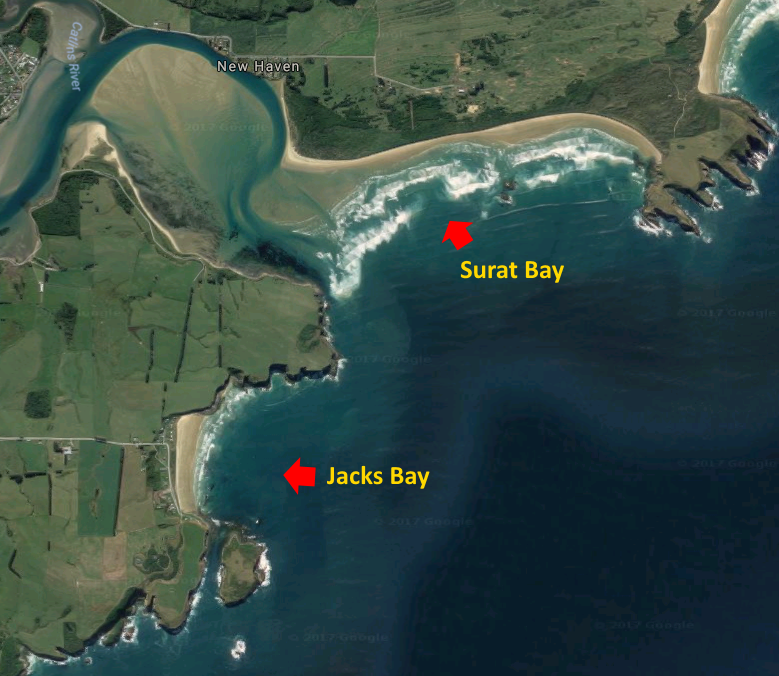
We set off to the south, crossing the Clutha at Balclutha and turning on to the Owaka highway. From Owaka we headed toward Pounawea but turned off on to Newhaven Rd, which eventually brought us to yet another small collection of baches on the Catlins River estuary. We piled out of the car, eager to stretch our legs, and looked up and down the shore. All we could make out was a rough sand bar where the river met the sea.

A nearby sign helped us get our bearings, informing us that we had not quite reached the infamous Surat Bay, which lay around the corner. Luckily a trail through the dunes promised to lead us to our goal.
We set off through the dunes, inhaling the slightly pungent smell of old seaweed. Once we’d rounded the spit we discovered a long sandy beach curving away into the distance, girt by tussocky dunes, with what at first I took for a gallows rising over them. Closer inspection showed this to be a sign post pointing out to sea, bearing the words “Surat Wreck 1874”.
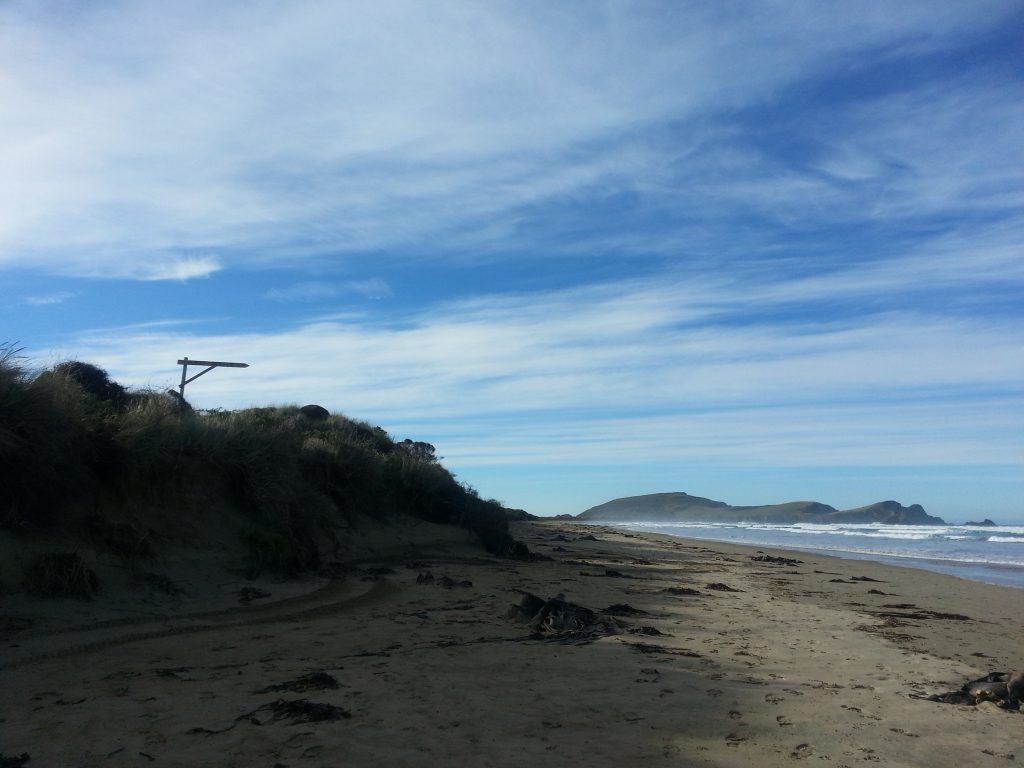
So now we’d found the place – but how did the unlucky immigrant ship come to meet its doom in this lonely bay? To answer that, we must start a world away and four months earlier in Gravesend, England. On 28 September 1873, The Surat departed from this port under the command of Captain Edmund Joseph Johnson. On board were 271 passengers, 37 crew, and 980 tons of valuable cargo, but not, it would eventually be determined, the correct set of charts for navigating the coast of New Zealand. Her destination was Port Chalmers, and her human cargo consisted of just the hard-working types the growing city of Dunedin was in desperate need of – farm labourers, carpenters, general servants, gardeners, dressmakers and more. These hopeful souls had brought all their worldly belongings aboard ship, farewelling their home country – many for the last time – as they embarked for their new lives in our fledgeling colony.
The voyage was mostly uneventful, with two births, although both infants died. The only other death was of another infant of two and a half months of age. Sadly, these happenings were par for the course on immigrant voyages, which partly explains why half of the occupants of Quarantine Island’s cemetery are children.
It was only once the vessel reached the New Zealand coast that things would start to get out of the ordinary.
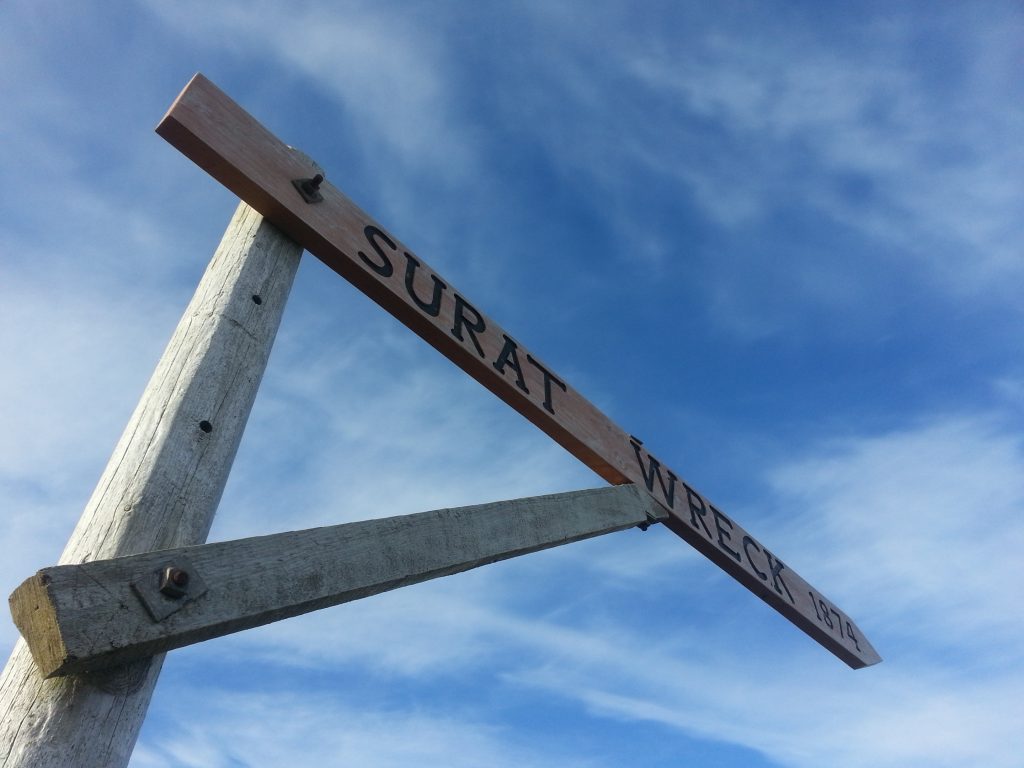
It was a rainy moonless New Years night that saw The Surat successfully round Stewart Island and proceed up New Zealand’s east coast. Having come off his watch, Captain Johnson joined three married women in the saloon in a toast to the dawning new year and the end of their long journey. Scarcely had they raised the drink to their lips when the vessel lurched, having struck ground somewhere in the vicinity of Chaslands Mistake (no, I cannot get distracted wondering who was Chasland and what was his mistake – that’ll have to be a story for another day).
What followed, it would later be alleged at the inquest, was a scene of mass confusion. Passengers and crew rushed to the deck to take stock of the situation. Though still afloat, the ship was found to be taking on water and only one of the two pumps could be made to work. Meanwhile a passing steamer, the Wanganui, was sighted and some person attempted to raise an ensign of distress while the women on deck frantically waved their shawls. Captain Johnson brandished his firearm and had the flag hauled down, and then some ten minutes later had it raised again – but by this time it was too late, and the steamer passed by.
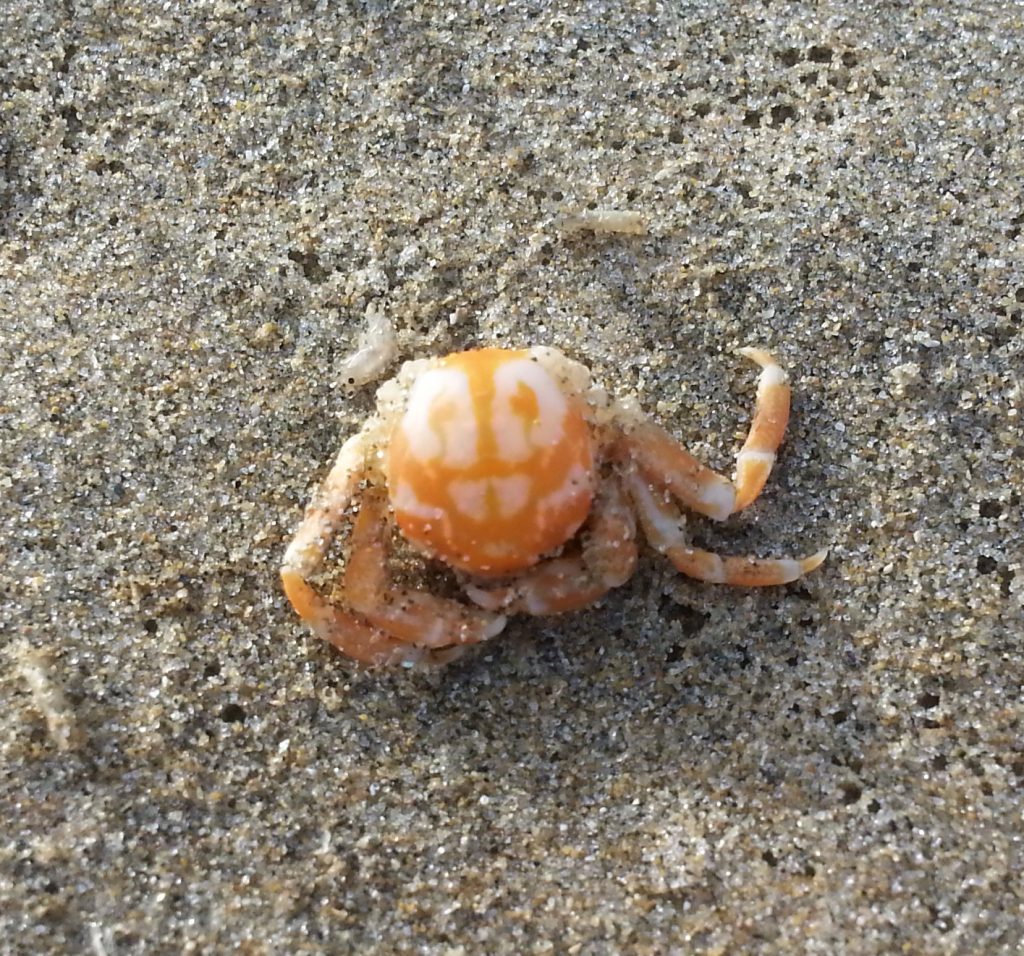
When questioned on this, the Captain insisted he was in the right, and could not allow the ensign to be raised without his authority lest he lose control of the situation. He also at that time did not believe the situation to be too serious, and perhaps intended to continue on to Dunedin. It is true that the passengers came to the brink of mutiny, with many urging one of the sail makers to take charge, as so many of the ship’s officers appeared to be incompetent or intoxicated.
The longboat and two life boats were launched, although not without some axe-brandishing by the mate, and ran alongside the ship for a time. According to several accounts, the Captain and mate were becoming progressively more drunk as the night wore on – many remarked on the Captain standing around with his hands in his pockets and appearing stupefied. Of course this was an era in which the ship’s doctor thought it appropriate to dispense stimulants in the form of liquor to the passengers manning the pumps, so perhaps in the stress of the situation some crew members had unwittingly overdone the “stimulants”.
The anchor was dropped in Jacks Bay to our south for a time, and about a hundred passengers were landed on shore. But by this time so much water had been taken on that the vessel was in danger of foundering, so the crew slipped anchor and headed for the sandy spit to the north of the Catlin River.
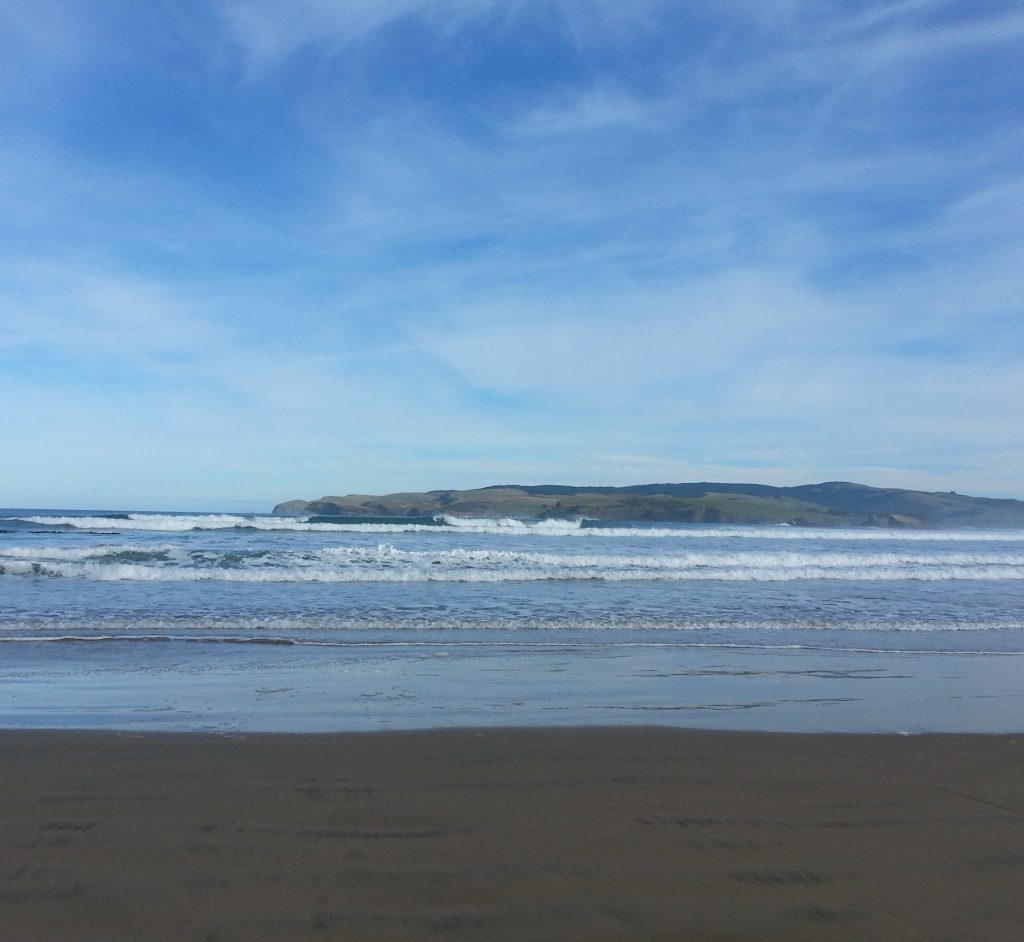
Once the ship was grounded on the soft sand, the remaining passengers were ferried to safety with the assistance of Captain Charles Hayward, the Catlins Heads harbour master. Distressed, bereft of their belongings, and poorly-clad due to having been woken in the night, the refugees were given shelter in the local sawmills. A strange way to start the new year and their new lives.
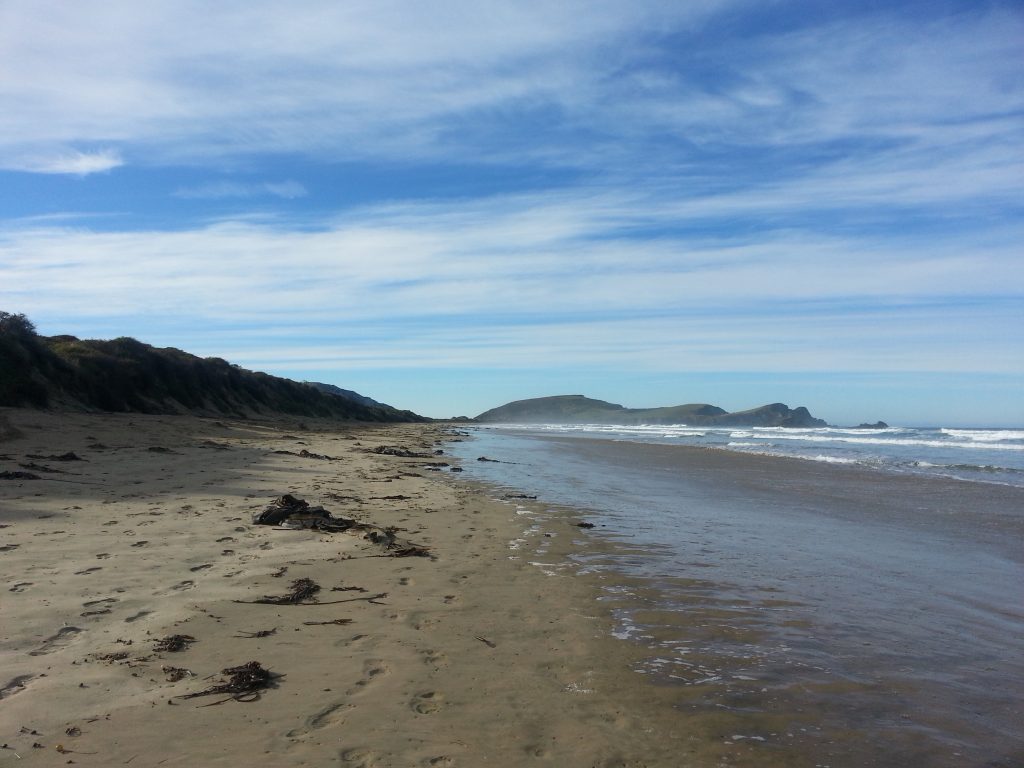
As soon as word reached Dunedin, Captain Jacquemart of the French man-o-war Vire offered the services of his crew in recovering the survivors. This warship, with the help of the Wallabi and belatedly-returning Wanganui, successfully recovered all the shipwrecked souls save for one woman who had given birth a few days previously and could not be safely moved. So she, her husband, sister-in-law and children were left in the tender care of the locals until such time they could safely journey on to Dunedin. Sadly, the baby did not survive.
Once the other survivors (plus one ill-tempered poodle) were safely aboard the Vire, the host set off for Port Chalmers, supplied by their hosts all the while with wine and good meat and the caperings of Roberte, the French sailors’ pet sheep.
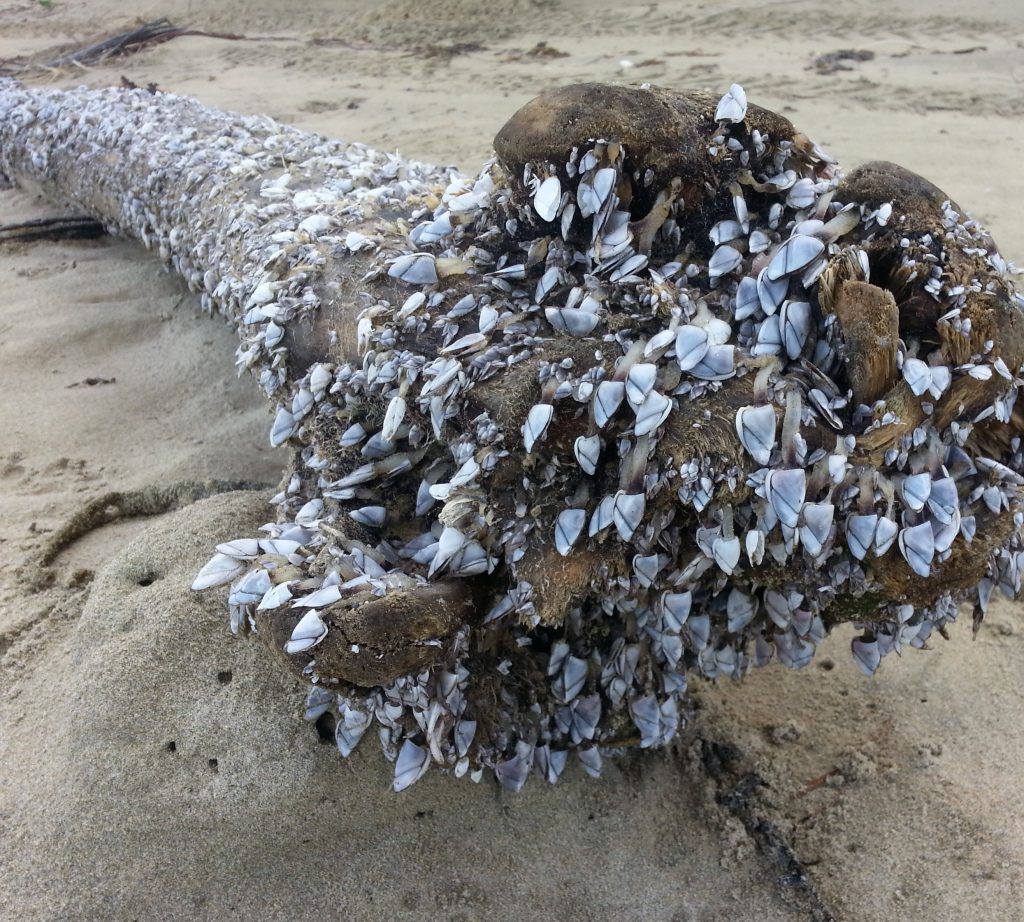
Upon arrival in Dunedin, the immigrants were transported to the Caversham Immigration Barracks, and collections were taken up in order to supply them with the necessities of life. I said before that these immigrants were just the kind Dunedin was yearning for, and that was proven by the fact that most had been placed in employment within days. The crew of the Vire were lauded as heroes and celebrated with a ball and many gifts and even a street named for the ship (located in the University quarter). The people of Otago would eventually have the chance to pay the French back in kind with the 1907 rescue of the stranded crewmen of the Marguerite Mirabaud.
And what of the poor Surat herself? She was auctioned off with the whole of her cargo, despite the outrage of passengers whose luggage was included in this sale. Finally the sale was concluded at £7050, to Guthrie and Larnach who owned milling operations in the area. Eventually the injustice of the lost luggage was mitigated somewhat by an injunction from the Supreme Court, and the government made efforts to see it returned – albeit in a waterlogged, rotten and incomplete state.

As for the drunken seamen, Captain Johnson had his certificate cancelled and was given two months imprisonment with hard labour for neglect of duty. The First Officer’s certificate was cancelled and the Second Officer’s suspended for two years.
It is fitting that here we should come to the end of our tale, for here too we reached the end of the beach, having passed the Triplets, three rocky promontories rising up from the surf.

We strolled back southward along the deserted bay, imagining the noise and drama of that day in 1874 as the refugees were landed – men, women, children, babes, and even a dog. Despite the shaky start to their new lives, it seems many of the immigrants prospered and multiplied.

We departed the Catlins with much to mull over. Still, many stories remain to be told of this little corner of Otago, and I am certain I shall return soon.
References:
Story and Passenger List of “Surat” Wrecked Catlins 1874 by I.C. Dreaver
THE IMMIGRANTS. Otago Witness, Issue 1149, 6 December 1873
THE SURAT DISASTER. Otago Daily Times, Issue 3719, 7 January 1874
Catlins Pioneering by A. R. Tyrell
New Zealand Shipwrecks 1795-1960 by C.W.N. Ingram and P.O. Wheatley
Transcripts of enquiry recorded in The Evening Star 8-12 January 1874, provided by Papers Past
Wreck of the Surat. Bruce Herald, Volume VI, Issue 561, 6 January 1874
DUNEDIN. MARLBOROUGH EXPRESS, VOLUME IX, ISSUE 575, 31 JANUARY 1874
Evening Star Evening Star, Issue 3394, 7 January 1874
ARRIVAL OF THE WHALING BARQUE ALBION. AUCKLAND STAR, VOLUME V, ISSUE 1306, 15 APRIL 1874
Thanks to DCC Archives for confirming the history behind the name of Vire Street
Source for title quote: THE ‘SURAT’ ENQUIRY. Daily Southern Cross, Volume XXX, Issue 5116, 15 January 1874
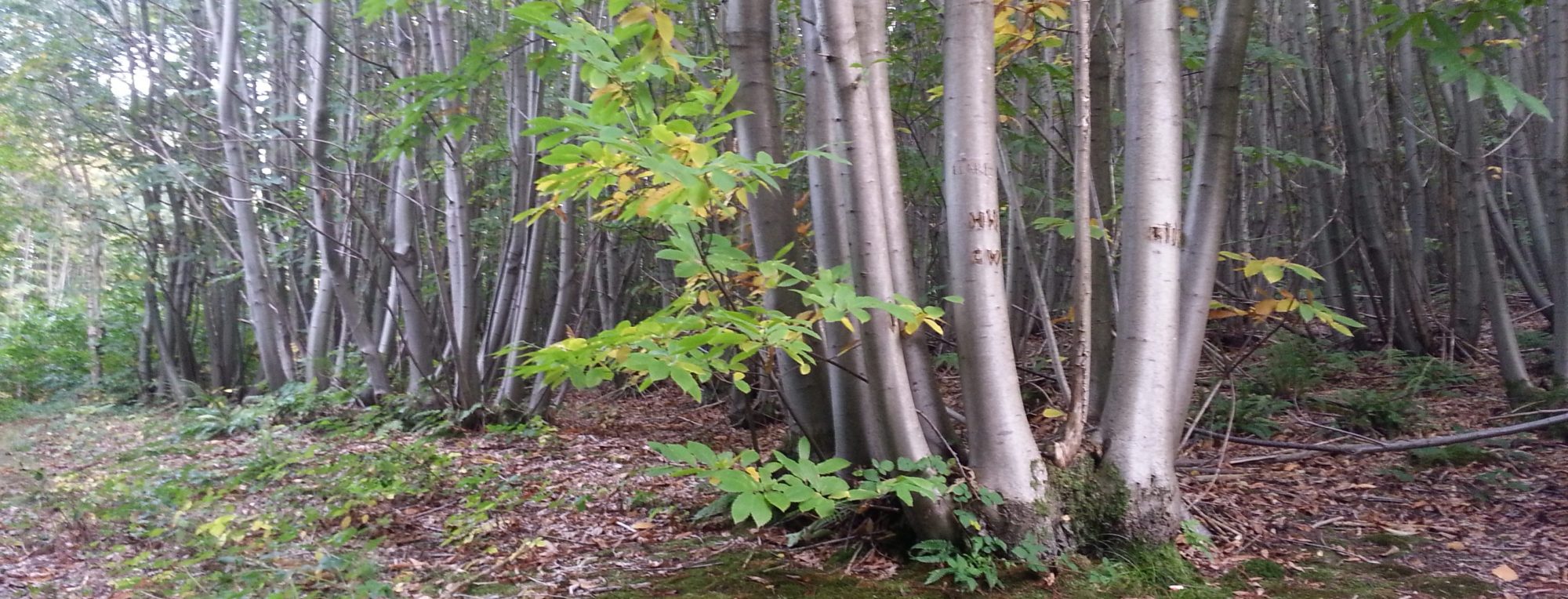

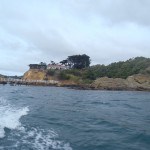
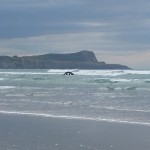
A good story. Thanks Amanda.
My Great Grandmother was on the Surat. Jane Jenkins.
That’s really neat that you have a connection with the Surat!
So was mine and his son and wife, my great grandparents, the Evan’s family.
Phil Myhre
Auckland
Thanks for this article. My great great grandfather, Alonzo Brook, was on the Surat.
Pauline Brook
Dunedin
My Great-Grandfather John Joseph Picton was on the helm when it went aground.
My great grandmother Mary Mulqueen aged 17 was also on the Surat
The Mansers are my family. The woman who gave birth upon arrival in. We Zealand was my great great grandmother. The baby was a girl and she most definitely survived!!
I am a descendent of John Booth, the passenger who took over control of the ship along with the Sail-Maker, at one point, to stop it from driving up on rocks and breaking up as it was anchored off of the beach.
my great grandfather GEORGE BROADLEY a woolln factory enginer wife MATHA and 6 children were all aboard the SURAT and survived the grounding at the Catlin coast and settled into dunedin as the engineer to the mosgiel mills
i do want to trace his children and subsequent successors down to present day .my late mother was emma georgina broadley late of eltham where born her mother was annie adelaide broadley